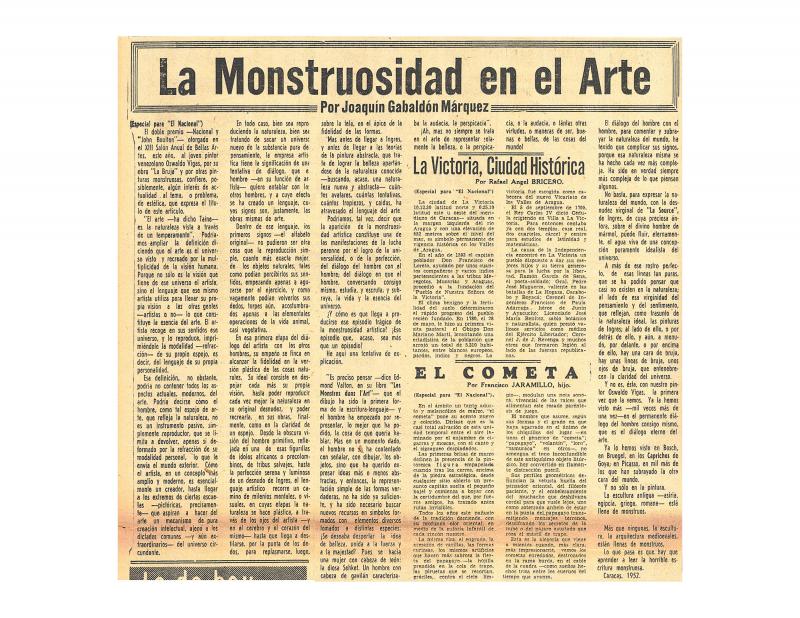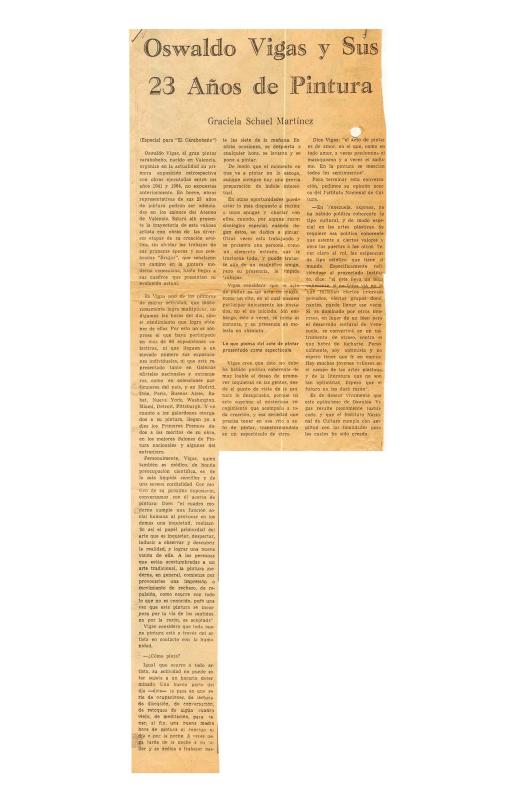The Venezuelan journalist Lenelina Delgado interviewed Oswaldo Vigas (1926?2014) on the occasion of the exhibition of the latter’s tapestries at the MBA (Museo de Bellas Artes) in Caracas. The event showcased 20 tapestries that Vigas wove on different looms in various parts of the world, including France, Portugal, Spain, and Mexico, between 1971 and 1978. During the interview, Vigas admits that tapestries represent a new direction for his painting, which inevitably influences anything else he works on.
What Vigas has to say about working with master tapestry makers is instructive, in that he stresses that “the translation” of the design onto the tapestry is a key factor in the process of creating these pieces, and explains that the cardboard templates must possess certain formal aspects that facilitate that “transposition.” Vigas admits that exact lines and well-defined structures are essential to the production of a good tapestry. This new structural and formal sense had already been visible in his painting since 1970, when he embraced a formal refinement that inspired designs that were ideally suited to tapestries. Another important aspect of this interview is that it reveals that Vigas did not actually produce the finished product; he supervised the process that was in the hands of a master tapestry maker or technician. Finally, the news that Vigas was working with ceramics is of interest in terms of his exploration of other creative processes and the development of his own personal artistic language.
On the subject of Vigas’ work, see the articles by Marta Traba “Oswaldo Vigas / Pinturas 1943– 1973” [doc. no. 1106962] and Roberto Guevara “Vigas: proceso abierto” [doc. no. 1152753]. Montero Castro interviewed Vigas and asked him about the inherent objectives of his work in “Oswaldo Vigas: la lucha por descubrir la identidad americana” [doc. no. 1168108]; Joaquín Gabaldón wrote about Vigas’ La Bruja in “La monstruosidad en el arte” [doc. no. 850831]. See also the article by Víctor Guédez “La relación mitificación-desmitificación de la pintura de Oswaldo Vigas” [doc. no. 1153185]; the article by Juan Liscano “La reiteración de Vigas” [doc. no. 1152769]; the article by Roberto Montero Castro “Vigas en el ojo ajeno - Plástica e identidad latinoamericana” [doc. no. 1153266]; the article by A. Feltra “Vigas sufre de afán publicitario” [doc. no. 1155580]; Lucila Velásquez’s interview “Vigas el de hoy: reflexiva evolución de la obra de ayer” [doc. no. 1153202]; Emilio Santana’s interview “Superemos la pugna de abstractos y figurativos: propone Oswaldo Vigas, el pintor que cultiva ambas tendencias” [doc. no. 1153298]; Graciela Schael Martínez’s interview “Oswaldo Vigas y sus 23 años de pintura” [doc. no. 1153282]; and the article by Armando Romero “Oswaldo Vigas: ritos elementales, dioses oscuros” [doc. no. 1153573].












